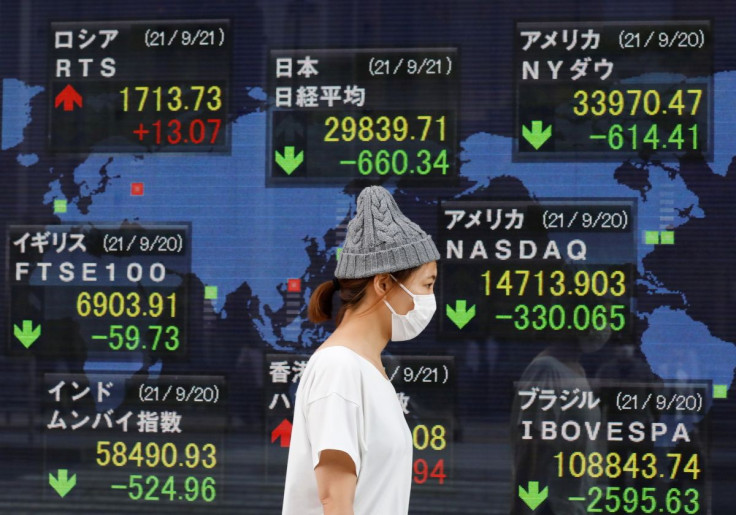Shares Slide, Oil Steady As Ukraine Concession Hints Calm Tensions

World shares slid on Monday as U.S. warnings that Russia could invade Ukraine at any time kept oil prices near seven-year peaks and sent investors scurrying to the safe-haven government debt they have mostly shunned this year.
Europe's STOXX 600 share index tumbled as much as 3.0%, but the dollar's modest gains pointed to an easing of tensions after Russia suggested it was ready to keep talking to the West to try to defuse a security crisis.
Ukraine's government bonds slumped 10% to the lowest of the crisis as strength in the Swiss franc underscored the appeal of safe-havens even as Ukraine hinted at concessions to Russia.
Markets in Europe were antsy. Major regional bourses fell more than 2%, with the pan-European STOXX 600 index down 1.92%. European natural gas prices for delivery in a month's time jumped nearly 10% to 81.30 euros per megawatt hour.
But Wall Street was mixed, with the Nasdaq toying with an almost 1% gain and the S&P 500 marginally lower.
Rising geopolitical tensions come at a time Wall Street is already vulnerable to inflation worries and the likelihood of tighter monetary policy from the Federal Reserve, said George Ball, chairman of wealth manager Sanders Morris Harris.
Stocks face too many worries for any longer-lasting upward move, Ball said, adding that investors should increase cash to 10%-20% of their portfolios.
"Stocks have been premium priced for quite some time and a mixture of rising interest rates, military threats and the highest rate of inflation since 1980 makes a modest baby bear move in stocks likely in the near term," Ball said in a note.
The Dow Jones Industrial Average fell 0.53%,, the S&P 500 lost 0.25% and the Nasdaq Composite added 0.57%.
St. Louis Fed president James Bullard restated his call last week for a full one percentage point of rate hikes by July 1 in comments that helped spark a repricing of Treasuries.
But on Monday Bullard said he would defer to Fed chair Jerome Powell about the timing of upcoming moves.
The yield on 10-year Treasury notes rose 7.1 basis points to 2.022%.
The dollar index hit a two-week high as investors remained anxious over tensions in Ukraine and on Bullard's comments. It was later up 0.425%, while the Russian rouble strengthened 1.14% versus the greenback to 76.60 per dollar.
The euro's retreat left it down at $1.1345 and pushed key euro-dollar implied volatility gauges to their highest since November 2020. The euro fell 0.4% to $1.1304.
"If it (the Russian invasion) happens, the question is how does it happen?" said Jim Veneau at AXA investment managers, saying it could be a conventional 'tanks roll forward' situation or a more hybrid-style conflict centred on cyber attacks.
The worrying thing learnt from the Cold War era, he added, was that "anything involving Russia and NATO, and you're only a couple of steps from a nuclear (buildup) escalation".
MSCI's gauge of stocks across the globe shed 0.89%.
Markets have been in convulsions since an alarmingly high U.S. inflation reading sparked speculation the Fed might raise rates by a full 50 basis points in March.
Futures markets since have scaled back the risk of a half-point rise to around 58%, when it had been priced as a near certainty at one stage last week.
The Bank of Japan conducted an unlimited bond-buying offer on Monday to restrain Japanese debt yields.
Oil eased from its highest in more than seven years after Ukraine hinted at concessions.
U.S. crude was recently up 0.52% to $93.58 per barrel and Brent was at $94.64, up 0.21% on the day.
© Copyright Thomson Reuters {{Year}}. All rights reserved.





















